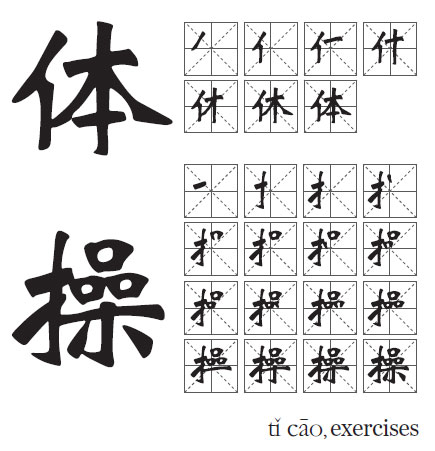Exercises have survived march of time

How a German tradition from the 1800s affects the massage parlors of China today
Whether you find them amusing, annoying, or confusing, "broadcast exercises" are ubiquitous in China, and, surprisingly, are now more prevalent than ever.
Walk past a hair salon, massage parlor or hotel at 9:30 am and you are likely to see staff lined up outside the entrance on the footpath, dancing to the music of My Little Apple, or some other pop song, following a lead dancer. After the dance, they yell slogans at the top of their lungs, startling passers-by, and, according to some news reports, attracting flying objects from residential buildings nearby.

| Students practice their broadcast exercises in the 1970s in Jiangsu province. Photos provided to China Daily |

To the uninitiated, it can seem either innocently charming or terrifying. However, this odd show of worker solidarity dates back at least 100 years.
Such exercises are usually done for the singular purpose of boosting morale, enthusiasm and solidarity. For those who make a habit of visiting such establishments, the overall experience would seem to suggest that this menagerie of dancing and camaraderie may be in vain. However, for some, the core value of this behavior is not to take a joy in one's work, but to gain a sense of collectivism and loyalty.
Although places such as Japan are still famous for this sort of worker exercise, its roots can be found in Germany.
This exercise experienced its primitive beginnings in 1803 via Friedrich Ludwig Jahn, the so-called father of gymnastics, who associated patriotism and unity with his popular workout well before the invention of the radio. His methods were widely applied to armies and factories for much the same purpose they are used today in China.
It wasn't until the 1880s when, bitterly humiliated by the Opium Wars, China's intellectuals and educators were looking to Western solutions to reform, strengthen and heal the country. Their answer came in the form of gymnastics at private schools to boost the young citizens' spirits and keep them in good health. As it was a variation of German military calisthenics, it was done very much in the military style.
In 1925, this practice truly became broadcast exercise when the United States married the concept with radio broadcasts for the first time. The Metropolitan Life Insurance Co sponsored a well-received radio exercise program that was practiced by millions. Then, the Japanese government, enthralled by the massive scale of the exercise in the US, embraced it. The Japanese armies spread it wherever they went and took it to regions they occupied during World War II, including Taiwan and Northeast China under the Manchurian puppet state of Manchukuo.
However, broadcast exercises, with their ingrained value of collectivism, were not welcomed with open arms after their short-lived peak. While in the US it fell down the pecking order thanks to more individualized sports such as baseball, in China the concept was confronted after the New Culture Movement in 1919 during the Republic of China period.
Hu Shi, an influential scholar and educator, campaigned for "naturalist education" and boycotted the cultivation of loyalty to the Kuomintang in schools. In Hu's words, an ideal young person should "be free of heart and independent of mind".
As a result of the liberal tendencies and reformed education ideas, in 1919, the China Education Association adopted a regulation that suggested "the soldiers' exercise" should be replaced with a variety of sports. In 1922, the Chinese government issued another paper that aborted radio exercises in schools altogether.
Toward the end of the Republic of China, as far as physical education was concerned, mass broadcast exercises were already on the brink of extinction, while the traditional martial arts and the more competitive Western sports were on the rise. In Japan, they met with a more sudden death; after the country's surrender in 1945, the victorious countries banned the exercise because it was too militaristic in nature.
The practice, however, found a new home in the Soviet Union. Predictably, in hard times, the practice soon grew to a scale that rivaled that of Japan. This, in turn, affected China.
That move officially started a tradition that still annoy many Chinese schoolchildren to this day. In 1951, the China National Sports Association and the Central Broadcast Bureau jointly released the First Broadcast Exercise. Numerous "radio exercise popularization committees" were set up across the country, and a series of 40 stamps were issued in 1952 to illustrate the exercises.
It was mandatory for the staff of all schools, governmental sectors and factories to go out to an open ground punctually at the sound of the radio music to practice for 10 minutes twice a day.
These halcyon days of broadcast exercises have come and gone, relegated to history, but the practice still goes on today - albeit with much improved methodology. Much like its heyday 60 years ago, students need to do it twice a day - at the beginning of the day and around 10 am.
Much has changed, even the radios have disappeared, evolving into speakers connected to iPods. The political preludes are gone, morphing into something vaguely related to exercise.
It's hard to tell whether the exercise is making the students more spirited, healthy or united. Every school, of course, features youngsters hanging their heads and shoulders, bored and tired, skillfully minimizing their movements to the right degree so they can both save energy and not be picked on by principals sternly overseeing their workout.
Courtesy of The World of Chinese, www.theworldofchinese.com
The World of Chinese
(China Daily European Weekly 06/26/2015 page27)
Today's Top News
- Japan tempting fate if it interferes in the situation of Taiwan Strait
- Stable trade ties benefit China, US
- Experts advocate increasing scope of BRI to include soft power sectors
- New engine powers cargo drone expansion
- China to boost green industry cooperation
- Manufacturing PMI rises in November































